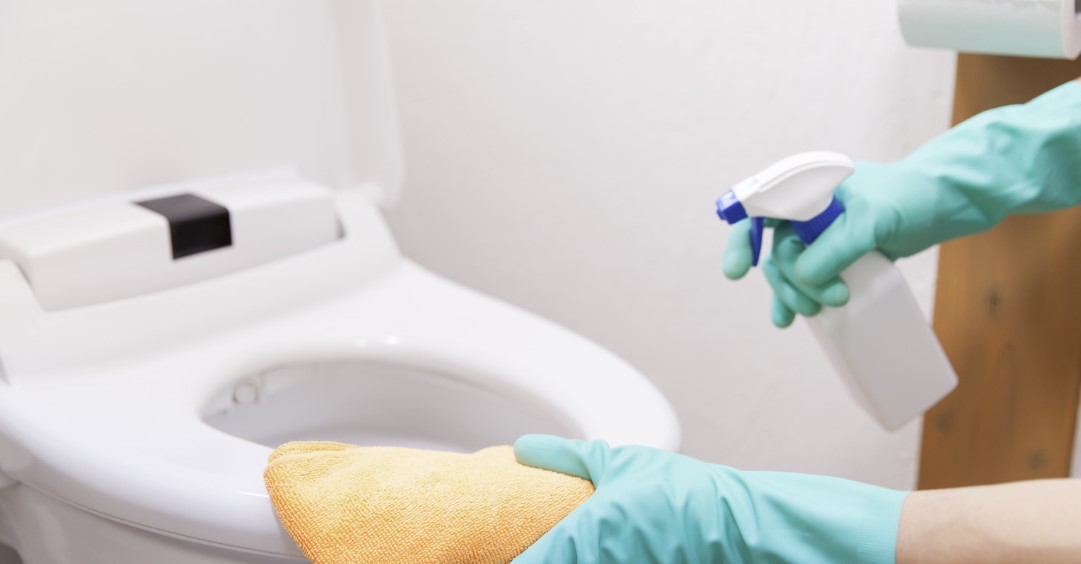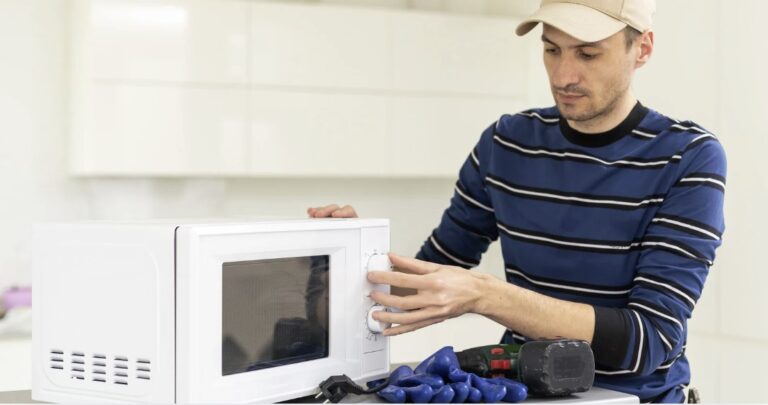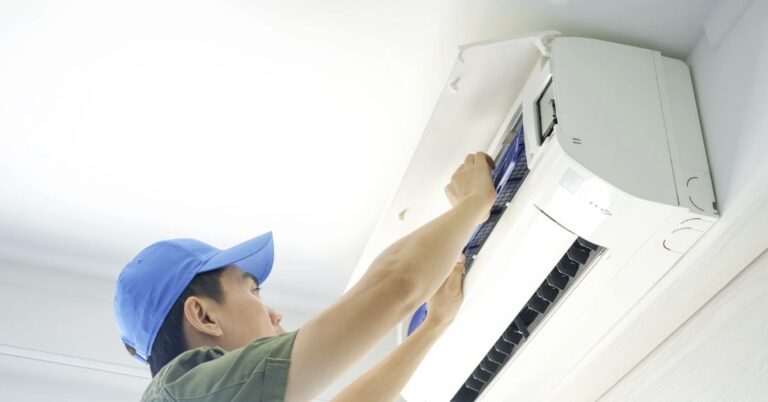Why Your Toilet Seat Turning Blue and How to Fix
Since the first blue toilet seat appeared, many have suspected pregnancy to be the cause. While many of the claims about blue toilet seats have come from pregnant women, not all have been true. Men and women have reported the toilet seat turning blue, pregnant and non-pregnant, which seems to affect households indiscriminately. Learn how to fix a blue toilet seat by reading the details in the following sections. Please don’t panic because it might happen because of your blue outfit.
Additionally, chromhidrosis and pregnancy play a role. It is easy to see why clothing could stain your toilet bowl blue. The other factors require justifications. Everything concerning the causes of blue toilet seats will be made clear in this post.
Why Did My Toilet Seat Turn Blue?
Have you ever walked into your bathroom only with the perplexing sight of a blue toilet seat? It’s an unusual occurrence that can leave you scratching your head. Let’s delve into the depths of this enigma and explore this blue stain on the toilet seat. A reaction between minerals and bacteria causes blue discoloration on toilet seats. Here’s how it typically happens:
1. Toilet Water: The Stealthy Culprit
One of the primary contributors to the blue stain on the toilet seat is the water in your toilet bowl. Suppose your water supply has more minerals like copper or iron. In that instance, water may react with toilet bowl chemicals. This reaction might eventually cause the seat to take on a bluish hue when allowed to continue over an extended period. Your toilet water becomes a silent artist, painting your heart an unexpected shade.
2. Blue Clothing: The Unexpected Stain Source
Believe it, your choice of clothing can play a role in the mysterious blue transformation. The dyes used in some blue fabrics, especially when exposed to moisture, can rub off and transfer onto surfaces like toilet seats. This occurrence is more common than you might think, and it can result in a blue stain on the toilet seat that leaves you wondering what could be causing it.
3. Pregnancy: A Surprising Connection
While it might sound like an old wives’ tale, there is some truth to the idea that pregnancy turns the toilet seat blue. Pregnancy hormones can influence the body’s chemistry, including sweat composition. When it comes into contact with certain bacteria and chemicals in the toilet, this altered sweat composition can sometimes produce a blue or greenish tint. So, if you’re an expectant parent and notice a blue seat, it’s not just your imagination playing tricks on you.
4. Chromhidrosis: Unusual Sweat Pigments
Chromhidrosis, a rare condition that involves the secretion of colored sweat, is another factor that can contribute to a blue toilet seat. Individuals with this condition may excrete sweat that contains pigments capable of staining surfaces they come into contact with. If someone with chromhidrosis sits on the toilet, the pigmented effort could lead to the blue discoloration you’re observing.
Preventing the Blue Discoloration
Prevention is the best strategy for dealing with a toilet seat turning blue. To minimize your chances of encountering this problem, follow these steps:
- Regular Cleaning: Ensure your bathroom is always clean. Regularly clean your toilet bowl and seat to remove bacteria and prevent the buildup of minerals.
- Use of Toilet Cleaners: Choose toilet cleaners specifically designed to remove mineral deposits and stains. These cleaners can help prevent the accumulation of minerals contributing to the chemical reaction.
- Flush Regularly: Flushing your toilet keeps your bathroom smelling fresh and prevents stagnant water from providing a suitable environment for bacterial growth.
- Install a water softener: When tap water has a high mineral content, consider installing a water softener. A water softener reduces the amount of minerals in your water, decreasing chemical reactions.
How to fix a blue toilet seat?
Stay calm if you stare at a blue stain on the toilet seat. You can address the issue by taking the following steps:
- Cleaning Agents: Use a mild toilet cleaner to remove surface stains. Don’t use abrasive cleaners, which could damage the toilet seat’s finish.
- Vinegar Solution: Create a mixture of white vinegar and water in equal parts. Apply this solution to the blue-stained areas for a few minutes. Gently scrub the surface using a soft brush or cloth. Vinegar can help break down mineral deposits and remove the discoloration.
- Baking Soda Paste: Use water and baking soda to make a paste to tackle tougher stains. To remove stains, spread the paste over the affected areas, let it sit, and scrub gently. Baking soda is mildly abrasive and can assist in lifting stains.
- Commercial Cleaners: If home remedies don’t yield satisfactory results, you can select commercial cleaners designed to remove tough stains. Follow the manufacturer’s instructions carefully.
- Professional Help: In extreme cases where the discoloration is deeply embedded, or the toilet seat material is sensitive, consider seeking professional assistance.
Related Posts:
- Ninja Blender Power Button blinking
- KitchenAid Dishwasher Beeping Causes
- LG Microwave Is Not Heating
- Bosch Dishwasher Starts Then Stops
Conclusion
- Understanding the chemistry of the toilet seat turning blue can help debunk its mystery. Whether it’s the minerals in your water, the dyes in your clothing, the physiological changes during pregnancy, or the unusual sweat pigments from chromhidrosis, there’s no shortage of factors at play. Preventing the issue through regular cleaning and maintenance is the most effective approach. However, if you’re already dealing with a blue toilet seat, combining household solutions and commercial cleaners can help restore its original appearance. Staying aware and proactive can help you keep your bathroom clean and appealing, free of unexpected discolorations.
Frequently Asked Questions
What’s Causing my Toilet Seat to Take on a Blue Hue?
Several factors can cause a blue tint to appear on your toilet seat. It may be due to the interaction of minerals in the water with bacteria, dyes from clothing, hormonal changes during pregnancy, or even unusual sweat pigments in certain conditions.
How Can I Prevent M y Toilet Seat From Undergoing a Blue Transformation?
It is critical to clean the toilet bowl and seat regularly to prevent the formation of bacteria and mineral buildup. Utilizing toilet cleaners designed to tackle mineral deposits and stains can be effective. A water softener installation could also help mitigate the issue if your water has a high mineral content.
What’s The Remedy For a Toilet That Has Already Turned Blue?
If you encounter a blue toilet seat, various solutions are available. You can gently scrub the stains using vinegar or baking soda paste. Commercial cleaners tailored for tough stains might also prove effective. If these solutions fall short, seeking professional assistance is a viable option.
Can Perspiration Result In a Toilet Seat Turning Blue?
Yes, indeed. Sweat, particularly under specific conditions such as chromhidrosis, can contain pigments that might lead to blue or greenish discoloration upon contact with the toilet seat.
What Brings About The Appearance of Blue Stains Within A Toilet Bowl?
The interaction between specific bacteria and minerals in the water, such as copper or iron, typically causes blue stains in the toilet bowl. These elements can combine to form compounds.




